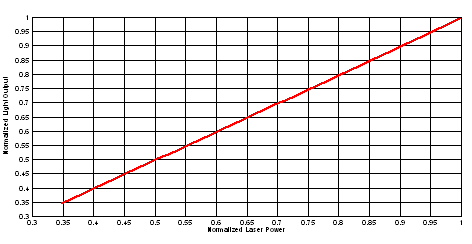DLPS186A March 2021 – May 2022 DLP650TE
PRODUCTION DATA
- 1 Features
- 2 Applications
- 3 Description
- 4 Revision History
- 5 Pin Configuration and Functions
-
6 Specifications
- 6.1 Absolute Maximum Ratings
- 6.2 Storage Conditions
- 6.3 ESD Ratings
- 6.4 Recommended Operating Conditions
- 11
- 6.5 Thermal Information
- 6.6 Electrical Characteristics
- 6.7 Switching Characteristics
- 15
- 6.8 Timing Requirements
- 17
- 6.9 System Mounting Interface Loads
- 19
- 6.10 Micromirror Array Physical Characteristics
- 21
- 6.11 Micromirror Array Optical Characteristics
- 23
- 6.12 Window Characteristics
- 6.13 Chipset Component Usage Specification
- 7 Detailed Description
- 8 Application and Implementation
- 9 Power Supply Recommendations
- 10Layout
- 11Device and Documentation Support
- 12Mechanical, Packaging, and Orderable Information
Package Options
Mechanical Data (Package|Pins)
- FYP|149
Thermal pad, mechanical data (Package|Pins)
Orderable Information
8.2.3 Application Curve
In a typical projector application, the luminous flux on the screen from the DMD depends on the optical design of the projector. The efficiency and total power of the illumination optical system and the projection optical system determines the overall light output of the projector. The DMD is inherently a linear spatial light modulator, so its efficiency just scales the light output. Figure 8-3 describes the relationship of laser input optical power to light output for a laser-phosphor illumination system, where the phosphor is not at its thermal quenching limit. .
 Figure 8-3 Normalized Light Output
vs Normalized
Laser Power for Laser Phosphor Illumination
Figure 8-3 Normalized Light Output
vs Normalized
Laser Power for Laser Phosphor Illumination